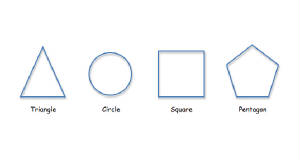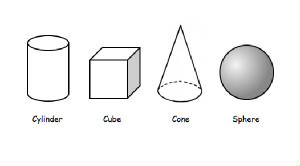|
|
 |
|
Teachers
Learning Team
Project Scoring Rubric*
|
Curriculum
Design (WebQuest) Project |
Points
Possible |
Points Earned |
|
CONTENT: |
11 |
|
|
WebQuest Student Pages: |
|
|
|
Introduction:
The introduction describes a compelling question
or problem, gains the students’ attention, and explains the purpose of the Quest. |
1.5 |
|
|
Task:
The task is doable and engaging, and requires
students to do more than to collect information from the Internet. Critical thinking is embedded in the task and is
at least at the analysis, synthesis, or evaluation level. |
1.5 |
|
|
Process:
Steps are clearly stated. |
1.5 |
|
|
Resources:
Sites and activities are clearly related and
designed to lead students from one step to another. Sufficient examples are utilized
Resources provide the information needed for
students to accomplish the task.
Resources are wisely chosen for their information
and usefulness. |
1.5 |
|
|
Evaluation:
The evaluation tool clearly measures what students
must know and be able to do to accomplish the task, and evaluation process is clear
All needed handouts and/or supplementary materials
are appropriate and clear. |
1.5 |
|
|
WebQuest Teacher Page: |
|
|
|
Rationale:
The rationale provides a connection to one
or more philosophies of education.
The rationale explains how the quest might
fit in the larger picture of curriculum design.
The rationale explains the purpose and designed
outcomes of the Quest. |
1.5 |
|
|
Standards:
The Quest is well-connected to national standards. |
1 |
|
|
Suggestions for implementation:
Teachers are provided guidelines for how to
implement the quest in a regular classroom.
Quest has a timeline for preparing for and
implementing
Quest notes any resources needed
Contains sufficient details for each of the elements of the assignment |
1 |
|
|
MECHANICS: |
4 |
|
|
Conventions: grammar, spelling, punctuation, abbreviations, sentence
and paragraph structure, Wording is appropriate for the topic and audience, project shows continuity and organization |
1 |
|
|
Information flows and not just a cut and pasted
from each contributor’s materials (watch transitions and coordination of the information collected by members. |
.5 |
|
|
References: cited appropriately in the text and on reference list |
1.5 |
|
|
Learning Team Proposal handed in on time, showed evidence of planning,
dividing the workload, and addressing the components of the project |
1 |
|
|
TOTAL |
15 |
|
Rubric for receiving points available (per item)
|
No point
|
Minimum of point |
Half of point |
Majority of point |
Full point |
|
Item not present |
Item present:
Mostly errors |
Item present:
Inconsistent representation |
Item present:
Minor errors |
Item present:
No errors |
* Based on the UNIVERSITY OF PHOENIX APA (5th ed.) FORMAT AND STYLE GRADING TOOL (Information referenced
from Publication Manual of the American Psychological Association, 5th ed., 2001) (and David Tompkins).
|
 |
|
Teacher Bios
Madiea Traille - Madiea is a 30 year-old virgo from the land of reggae music, Jamaica. She has been in the education sector
since August 1999. She is passionate about education because she loves excellence and she wants to help to mold young
lives in a positive way. In 1995, she graduated from the Sam Sharpe Teachers’ College in Jamaica with a credit diploma
in Primary Education. In 2003, she completed her Bachelor’s Degree in Education with Northern Caribbean University.
Last year, she saw the need to further advance herself in the education sector so that she could continue to make a lasting
impression on young lives. To this end, she is now pursuing her Masters Degree.
While working in Jamaica
she was responsible for several areas of school life. These included curriculum development, staff development, extra curricular
activities and the school plant. She is currently living in the Turks and Caicos Islands and have been since August
2004. She is employed by the government of the country and works in a rural school. The population of the school is
very small, just about seventy three (73) students. She teaches only ten (10) fifth graders. She also teaches sixth graders
Mathematics. |
Ruth Jackson - Ruth is a
native Texan, born in Waco, Texas.
She graduated from the the “Grammy Award Winning”
High School for Performing and Visual Arts in Houston, Texas. Her art area was Vocal Music. She worked in
Houston ISD for over 15 years. teaching in piano labs, general music classes and choir for grades Pre-K through 8th grade. She also has
experience teaching piano classes and private voice and piano lessons in a private music studio for ages ranging from Pre-K
to adult. Three years ago, she moved to Big Spring, Texas where she taught Jr. High Choir and is currently teaching
elementary music in Grades Kindergarten through 4th grade. In addition to teaching music in public school, she
also teaches private piano at the local community college, plays piano and organ at the First Methodist Church in Big Spring
and teaches private piano and voice lessons in her home. |
Jared Austin - Jared currently resides in Arizona. He moved down to Arizona from chilly Idaho where he accepted
his first teaching job as an elementary school art teacher. Jared says his passions certainly include art, but even
more than that he is excited by learning. He believes it is the way that art catalyzes learning and facilitates making
connections that attracts him to that subject. He earned his bachelor's degree at BYU-Idaho.
|
To Madiea and Jared - Thanks for supporting me during my "learning curve" and allowing
me to put this together.
Ruth ("The Publisher and "Webmeister")
|
 |
|
|
|
 |
|
Cast/Credits
The "Weaver" - Jared Austin
The "Link Finder" - Madiea Traille
The "Publisher" - Ruth Jackson
Rationale
Technology has advanced tremendously within
the last decade and will continue in the years to come. This advancement will compel schools to implement technology within
the curriculum. Understanding how to design lessons and activities with technology is an essential skill for educators in
the 21st century.
A WebQuest is a framework for research
and exploration on specific topics. Many philosophers of education have emphasized the importance of discovery and the inquiry
way of learning for students. Education is now seen as a student centered activity that engages students in problem solving
skills. WebQuest makes learning interesting for students as they discover information using the World Wide Web. WebQuests
can take students on a virtual journey to anywhere in the world!
This WebQuest will allow students to learn
independently while using the internet to enhance their learning. The aim of this Web Quest is to motivate students to
see and understand the connection of Mathematics to real life situations. Mathematics is present in almost everything we do.
Students must be made aware of why they learn certain topics so that they can better make the connection. Mathematics will
come to life as students see how important it is in Art and Music. Ultimately, they will deduce and apply this concept
to other subjects as well.
Implementation
This quest
can be implemented in any third grade Mathematics, Art or Music lesson to show integration among subject areas. Teachers can
use this activity as a lesson or it can be used as a culminating exercise for students to prove what they have learned.
Resources
All resources are listed on the Resources
page.
Answer key for Drawing Activity #1

Answer key for Drawing Activity #2

Answer key for 2D/3D activity.
1. 2D
2. 3D
3. 3D
4. 2D
5. 3D
6. 2D
7. 3D
8. 2D
9. 3D
10.
3D
Answer key for “Search for the Missing Artifacts” activity.
1. Square
2. Circle
3. Triangle
4. Pentagon
5. Cube
6. Cylinder
7. Sphere
8. Cone
9. Fraction - 1/4
10. Fraction - 1/2
11. Fraction - 3/4
12. Whole
|
 |
|
|
|
|
|
|
|
 |

